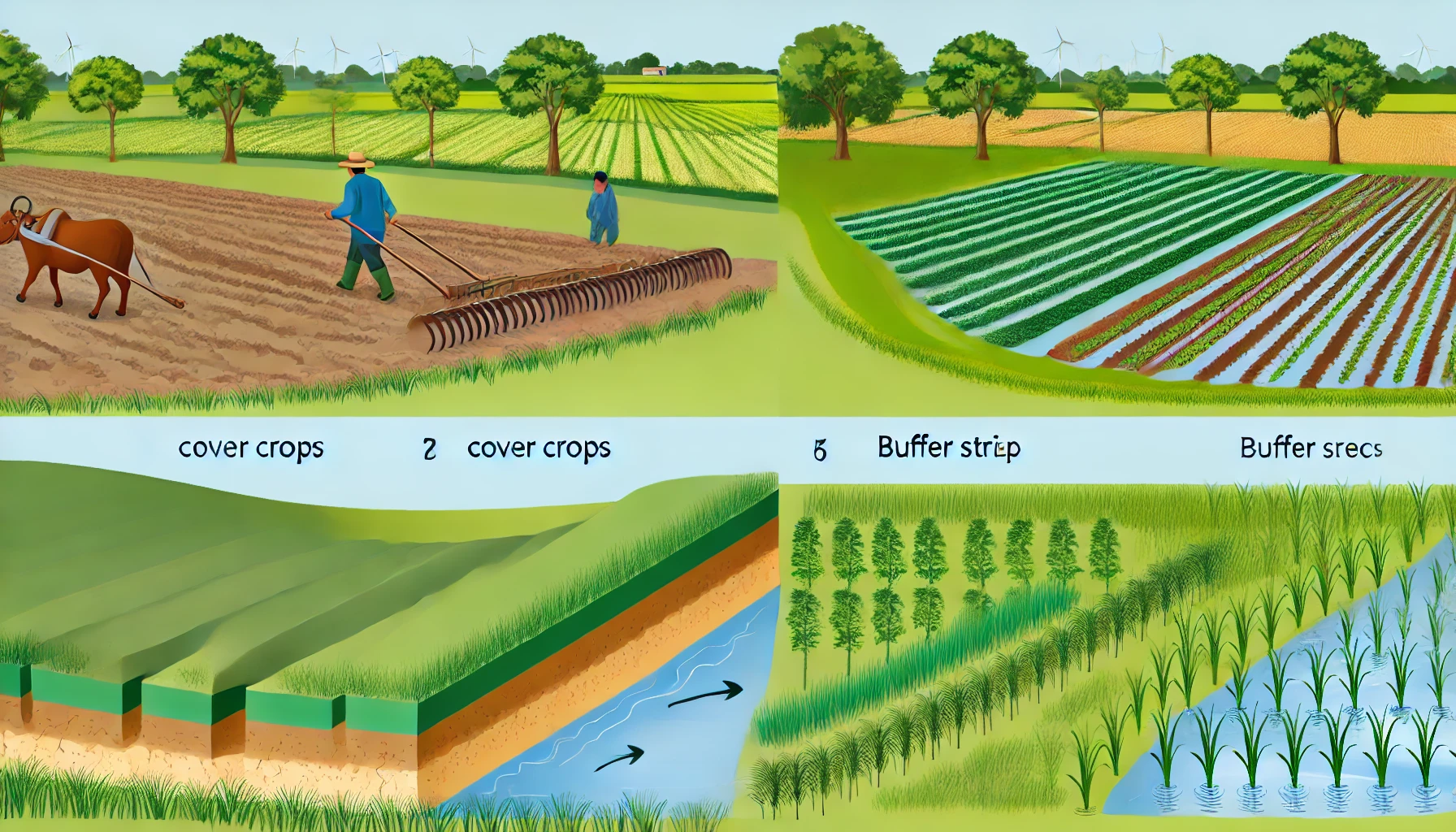 |
Preventing soil erosion in agricultural areas is essential for maintaining soil health, productivity, and sustainability. The best methods involve a combination of techniques tailored to the specific conditions of the land. Here are some effective strategies:
Contour Plowing: This method involves plowing along the contours of the land, creating natural barriers that slow water runoff and reduce soil erosion. Terracing: Building terraces on steep slopes can significantly reduce erosion by breaking up the slope into a series of flat areas, which slows down water flow and encourages water infiltration. Cover Crops: Planting cover crops such as clover, rye, or legumes helps protect the soil from erosion by covering it with vegetation, which reduces the impact of raindrops and holds the soil together with their roots. Buffer Strips: Establishing buffer strips of grass or other vegetation along the edges of fields, especially near waterways, can trap sediment and reduce runoff. No-Till Farming: This practice involves leaving the soil undisturbed and planting crops directly into the residue of previous crops, which helps maintain soil structure and reduces erosion. Crop Rotation: Rotating crops helps improve soil structure and health, making it more resistant to erosion. It also reduces the risk of pest and disease buildup. Windbreaks: Planting rows of trees or shrubs as windbreaks can reduce wind speed across the fields, minimizing wind erosion. Implementing these methods can effectively prevent soil erosion, ensuring the long-term health and productivity of agricultural lands. |
#SoilErosion #Agriculture #SustainableFarming #SoilHealth #ContourPlowing #Terracing #CoverCrops #BufferStrips #NoTillFarming #CropRotation #Windbreaks #SoilConservation #FarmingTechniques #Agroecology #ErosionPrevention #LandManagement #AgriculturalPractices #SoilProtection #SustainableAgriculture #EnvironmentalStewardship #FarmingTips #HealthySoil #FarmManagement #ErosionControl #SustainableLandUse #AgriculturalSustainability #SoilFertility #EcoFriendlyFarming #GreenAgriculture #LandPreservation #AgricultureInnovation #Farmers #SoilManagement #PreventErosion #LandCare #AgroSustainability #FarmSolutions #EnvironmentalProtection #ErosionMitigation #HealthyLand #SustainablePractices #AgriTips #ConservationAgriculture #ResilientFarming #SoilStewardship #FarmHealth #ErosionSolutions
Questions and Answers
1. What is contour plowing and how does it prevent soil erosion?
Contour plowing involves plowing along the contours of the land, creating natural barriers that slow water runoff and reduce soil erosion.
2. How do cover crops help in preventing soil erosion?
Cover crops protect the soil from erosion by covering it with vegetation, which reduces the impact of raindrops and holds the soil together with their roots.
3. What is the benefit of terracing in erosion control?
Terracing reduces erosion by breaking up steep slopes into a series of flat areas, which slow down water flow and encourage water infiltration.
4. How do buffer strips work to prevent soil erosion?
Buffer strips of grass or other vegetation along field edges trap sediment and reduce runoff, protecting waterways and reducing soil erosion.
5. Why is no-till farming effective in reducing soil erosion?
No-till farming maintains soil structure by leaving the soil undisturbed and planting crops directly into the residue of previous crops, which helps reduce erosion.